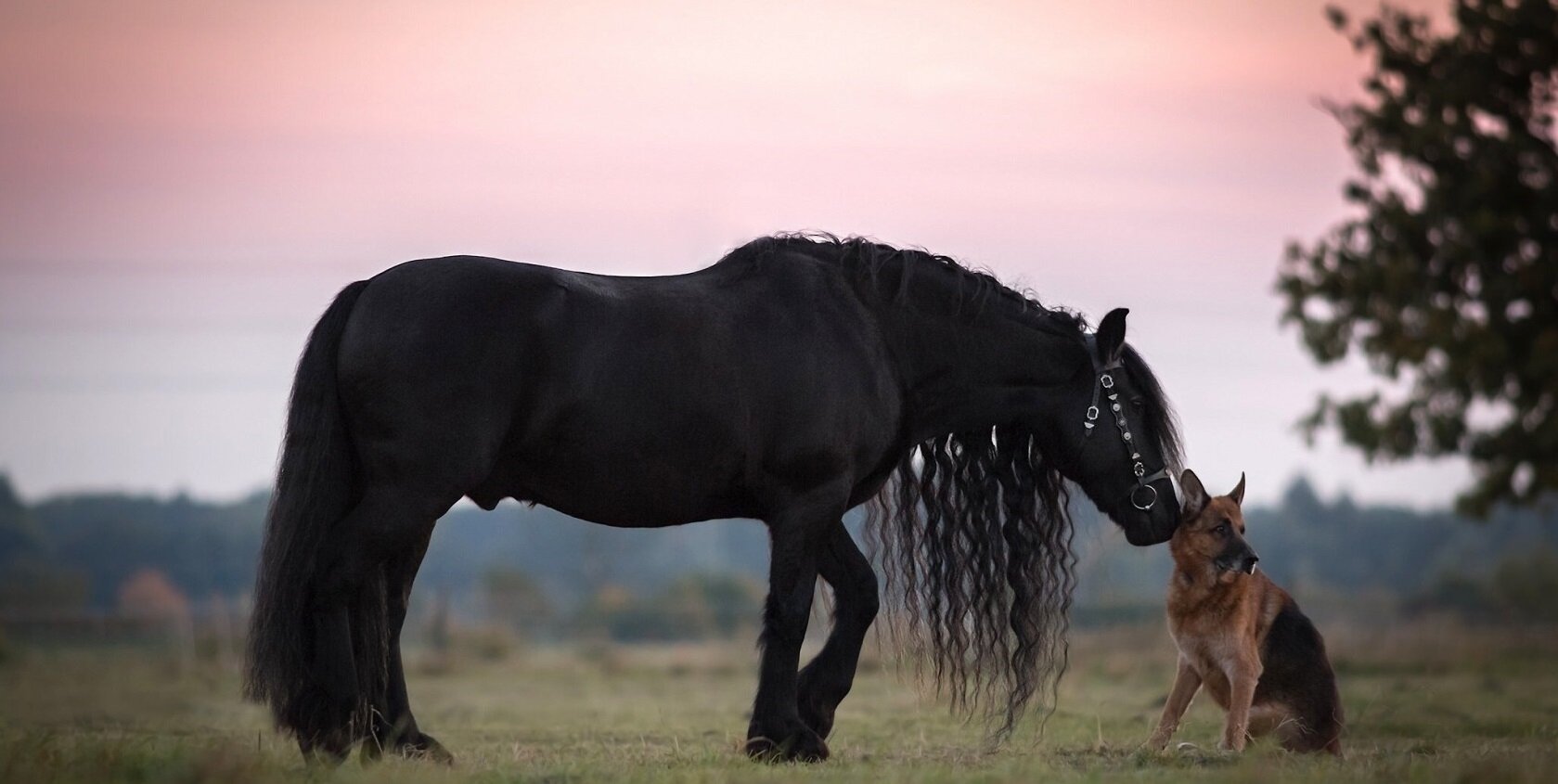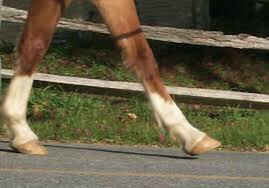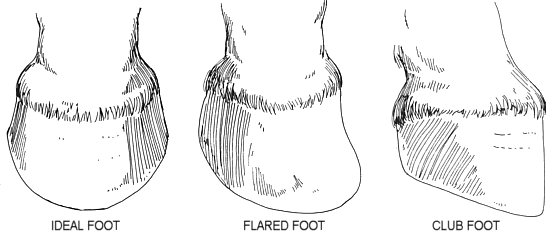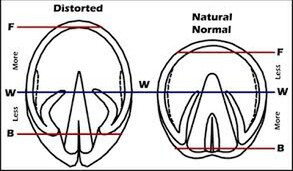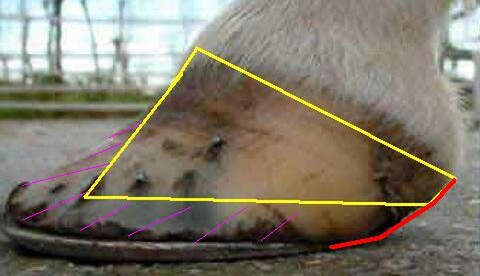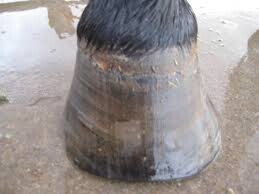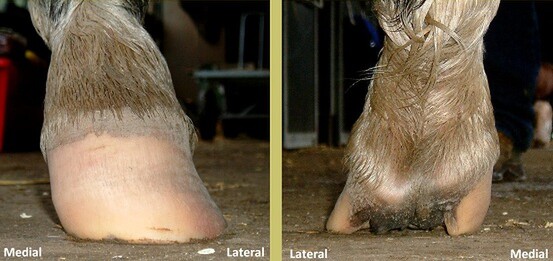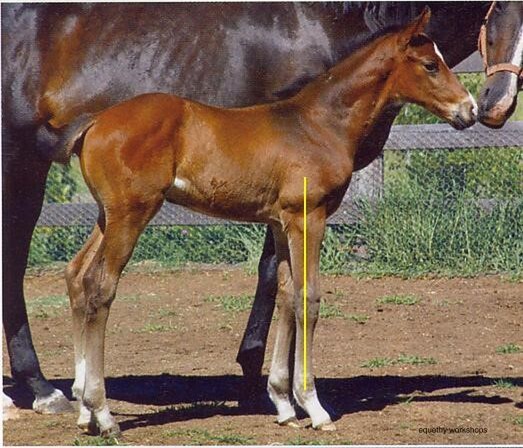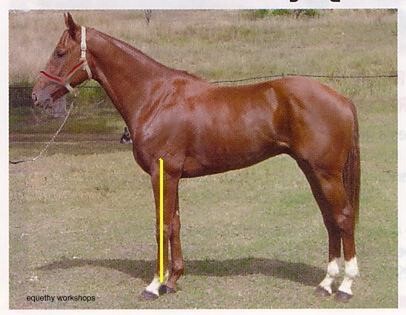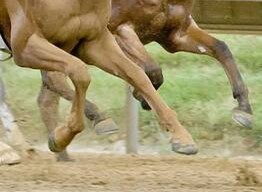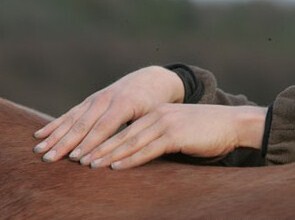I have found while I’m treating horses with bodywork (Myo-fascial Release/ Acupuncture/Laser/ Osteopathic Techniques), we have to always assess the biomechanics of the individual and it always occurs to me that a high percentage of these horses have many various feet issues; from majority being long in the toe, or high heel/low heel syndrome/underrun heels, tight shoes, cracks and etc.
I have always known there is a direct correlation with feet and the effects of biomechanics and often unrecognized ramifications on performance—such as creating difficult saddle fit problems, muscle imbalances, and changes in posture.
All of these can result in loss of performance and are a potential source of lameness. When there is asymmetry in the body or limbs, there is compensation. Where there is compensation there are postural changes. Where postural changes exist, movement will be affected.
When movement is not symmetrical, performance and eventually soundness will suffer. Many horse owners know instinctively that their horses are “not quite right” there is a link between hoof distortion and upper body musculo-skeletal issues.
Incorrect shoeing / trimming slowly change horses’ hooves . They also alter the very integrity of the structures inside the hoof that were engineered by nature to withstand the huge weight of this large animal in motion.
There is a remarkable body tolerance for asymmetry of most structures. Our job as horse owners, practitioners, veterinarians, farriers, and riders is to be able to recognize where asymmetric tolerance ceases and pathologic change and damage starts.
As explained by Dr. Ridgeway: The effects of a low heel/high heel syndrome has on the horse’s posture and performance. Appropriate trimming and/or shoeing combined with appropriate bodywork and riding remains the key to soundness.
Significant awareness has come from recognizing that the syndrome can grossly alter the shape of the shoulder and the back. Altering the posture and shape of the shoulder and wither area creates problems with saddle fit. The resulting posture of the horse affects not only saddle placement but also alters the rider’s posture and balance, and ultimately the rider’s soundness.
Which foot is the “abnormal” foot?
To begin to answer this, it is necessary to talk about the possible reasons why the horse has the syndrome in the first place. Also, it is important to define what we are calling a low heel and/or what we are defining a high heel.
You will note that not infrequently, the so-called “high” heel is actually of a very acceptable height and the limb shows a good pastern axis and hoof angle. Radiographs of this foot may be very acceptable. In this case, the low heel is likely under-run to some degree and exhibits a long toe with flare present.
This is a common form seen with the issue of laterality, i.e. “left or right handedness.” In the horse’s case, it is better expressed as right or left forelimb dominance. Since this is a source of asymmetry, there may well be a genetic predisposition. which foot is high heeled and which is low heeled does not always fit the model provided by laterality. We need to look further.
In a second scenario, the low heel may be the one showing a very acceptable height and be providing a good pastern axis. Radiographic findings may be normal. The higher heel is the problem in this horse. This scenario is more often associated with some form of trauma. That trauma can come from several sources:
Trauma that occurred during birthing Crushing injuries to ribs and nerves exiting the spine, especially between T-3 and T-8.
Such injuries are often associated with manual assistance, especially in “maiden” mares and difficult births. They are much more common than realized.
Predisposition to contracted tendon or tendons.
Trauma occurring after birth.
Trauma to muscles, tendons, ligaments, or acquired vertebral dysfunction.
Trauma from falls, rough play, or exceeding work load capacity.
Trauma induced by improper trimming or shoeing.
Trauma resulting from running into fences or other objects.
Other less-frequent causes include foals, whose mother allowed them to nurse only from one side. This will sometimes happen in mares that have pain from stomach ulcers.
Any of the above categories can create a toe first landing or difficulty in adequately advancing the limb.
For any of the above reasons, the foal may choose a pain-compensating posture that will allow it to graze. If the foal has adapted its stance because of pain or discomfort, it eventually becomes a habit—and can then last beyond the period of pain. It is for these reasons that I consider the “grazing pattern” more of a symptom and a consequence rather than the initiating cause of most high heel/low heel problems. The exception is the ones where laterality is a major issue. “Ridgeway”
Postural Deviation and Effect on Joint Angles as a Result of High Heel/Low Heel:
The overall postural deviations that are a direct consequence of the lower of the two heels.
Why does caudal heel pain develop in the (back) hoof area first?
The foot is well recognized as a common source of lameness. It has been estimated in multiple studies that the heel region alone accounts for more than one third of all chronic lameness in the horse.
It shouldn’t be a surprise that the only region of the horse’s body in constant contact with the ground is most susceptible to trauma and injury. The foot receives the initial forces generated during ground impact.
A healthy foot significantly dampens the vibrations generated during ground impact. The heel region in particular is designed for this purpose and houses the structures most responsible for absorbing shock such as the frog, digital cushion, collateral cartilages, bars and an extensive vascular system. All these structures work together in harmony to absorb and dissipate shock. Therefore for the heel to accommodate this task it needs to have healthy and fully functional structures.
At higher speeds, when shock absorption is most needed, the heel should contact the ground first. The phases of the stride and foot loading sequence should be a coordinated pattern of heel contact, loading, breakover etc..
Those which land toe first, don’t utilize the heel to absorb shock and as a result commonly present with lameness issues further up the limb. Horses with low heels and long toes appear to be prone to toe first landing. Because this is where all the soft tissue structures lay inside the hoof capsule that were designed to act like our heels do and take the brunt of the stride landing.
These amazing structures fill the back half of the hoof with the pedal bone P3 sitting ahead of them at the toe.
So...depending on the breed, the age of first shoeing and the abilities of those shoeing the horse thereafter to balance the hooves, the deformation can happen very quickly, or slowly over many years, but it will happen. Hoof distortion causes caudal heel pain and avoiding this is often the first symptom that owners really notice. A slight lack of impulsion, then unwillingness to land a jump or the horse will try to traverse downhill slopes in a creeping way. Eventually the horse will display vague lameness or short stepping.
The hoof will deform by either running forward and becoming splayed and flat, or start to contract at the heels and become steeper. The type of deformation usually depends on the hoof shape particular to that breed.
Thoroughbreds & breeds with wider pedal bones tend to acquire under run, long low heels and forward over long toes.. Many horses thought to have navicular syndrome actually have acquired caudal hoof pain stemming from their deformed hooves. Every single case of navicular syndrome displays some degree of hoof deformation! Every single one
What is good hoof form and if your horse isn’t limping lame how can you know if the horses are sore?
The way horse chooses to stand Posture
If you have a sore foot yourself and you walk,and stand, always avoiding the sore area, after a time you will find you have secondary problems such as a sore back or sore hip.
Continue to adjust your posture for many years and eventually this will even lead to changes in areas as remote from your injury and because you will eventually carry your head tilted, to offset the tilted shoulder that is compensating for the tilted hip which is allowing you to take weight off your sore foot.
A list of problems will arise throughout your body. The same thing happens to horses who adjust their bodies to avoid years of heel pain.
To identify horses with hoof pain it is first necessary to identify what is the natural comfortable stance for horses.
Normal Posture: Whether a young foal or an old horse they should be able to utilize fully their “stay apparatus” muscles of his forehand and partial stay apparatus of his hindquarters. To do so they must be able to keep their front legs vertical as illustrated below.
A comfortable stance is shown on both these horses fully engaging their front leg stay apparatus with forelegs locked vertically.
Proper balanced hooves
To minimize the occurrence of such injuries, the foot needs to be properly balanced and shod. When the foot is allowed to get out of balance causing abnormal weight distribution, the hoof capsule becomes distorted and susceptible to injury. A healthy foot is recognized as having adequate sole depth, good bar structures, collateral cartilages and digital cushion. Having strong well developed components is essential for normal foot function.
Structures of the foot must have proper form and spatial arrangement to function properly. Many feet develop low heels and a longer toe. This puts the foot out of balance, the coffin joint is placed more towards the back of the foot, increasing load on the heel region and creating a lengthy toe lever, putting more strain on the deep digital flexor tendon and potentially contributing to or exaggerating a toe first landing.
Some feet naturally have a low heel and longer toe and can’t be made normal, but they can be managed and helped with trimming and shoeing. Rolled toes, rockered toes, fitting the heels with adequate support and maintaining the center of the foot’s weight bearing surface are ways to compensate.
Besides good farriery and foot balance, the ground conditions or footing is also an important factor. Footing that is too soft or too hard can interfere with the dynamics of limb loading. Ideally the footing should be soft enough to allow the toe to sink in, look at a foot print in a grass field, this is probably ideal.
Footing that is to soft will put more stress on soft tissue structures and footing that is too firm can cause foot bruising and generally causes more wear and tear on the boney column. Management is also important in prevention.
Contracted heels can occur as a result of a chronic heel pain condition in which the heels have not been loaded normally. Heel contracture can also be seen in club feet from mechanical under loading of the heel region.
Contracted heels should be differentiated from collapsed heels. Heel contracture can become a secondary source of lameness, worsening the lameness grade, effecting the cycle of abnormal landing, foot dysfunction and lameness.
The manner in which the foot contacts the ground and loads affects the health of the foot as well as the structures above it. Severe hoof capsule shape changes are known as distortions and are the result of long term abnormal loading patterns. Examples of hoof capsule distortions are flares, displacement of coronary bands, dishing of hoof wall, cracks, sheared heels, contracted heels, under run heels and collapsed heels.
Abnormal loading can be over or underloading of one region of the foot. Abnormal loading can be the result of conformation, trimming/shoeing practices and lameness.
Trimming and shoeing can help redistribute load and improve or resolve hoof capsule distortions.
Although the adult conformation cannot be changed, trimming and shoeing techniques can alter point of ground contact, weight distribution during the loading phase and decrease the influence of the deep digital flexor tendon on hoof capsule distortion.
When the horse is barefooted, the medial/lateral imbalance can be addressed more frequently and better controlled than when a shoe is present for six or eight weeks.
In laterality cases, as well as all other factors of asymmetric heel heights, management is enhanced by a team effort. The farrier’s work becomes more effective when utilizing integrative therapies such as acupuncture/ Myofascial Release/ laser/ Osteopathic Techniques. Due to the numerous horses I see with feet issues I have taken to understanding foot issues, shoeing and etc. A horse’s body issues cannot be fully corrected if the feet are not reasonably balanced. The AMRT sessions will not achieve long term solution without attention to the feet.
Good body work for younger horses may respond to therapy well enough to become full rebalanced. In all cases of significant feet issues, the best results are achieved if the appropriate foot corrections are accompanied by appropriate body work such as Animal Muscle Release Therapy Ltd. Which utilizes Myofascial Release / Acupuncture / Laser / Moxibustion / Osteopathic Techniques.
